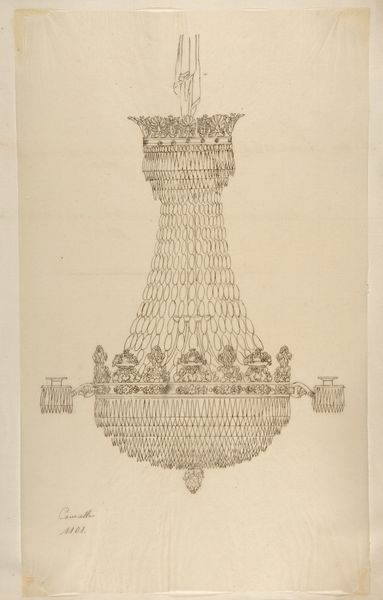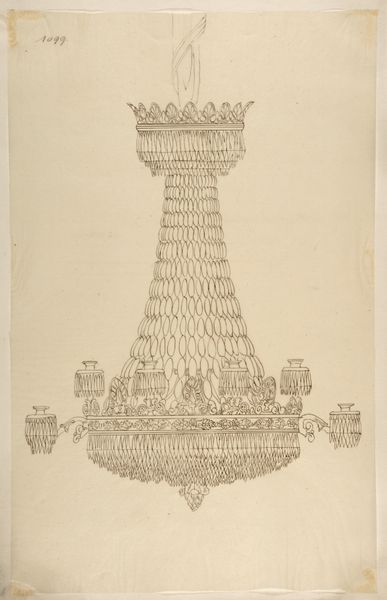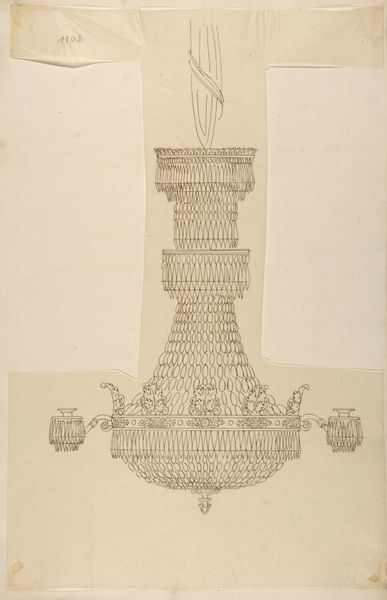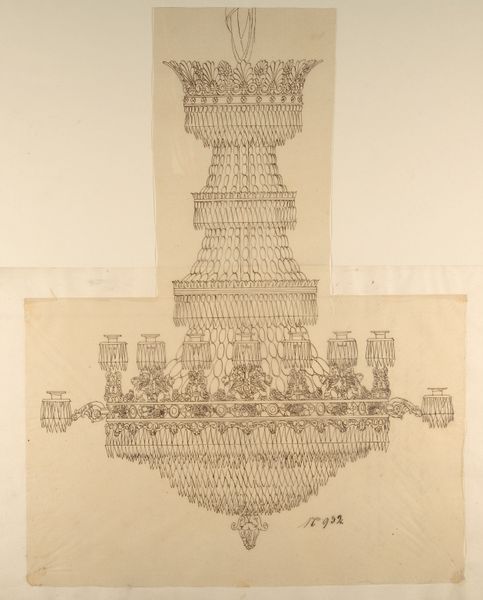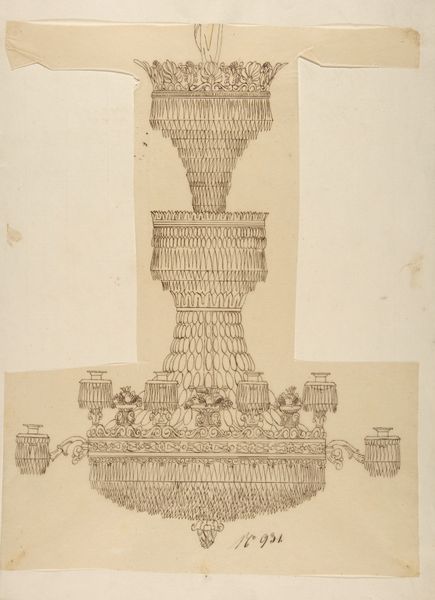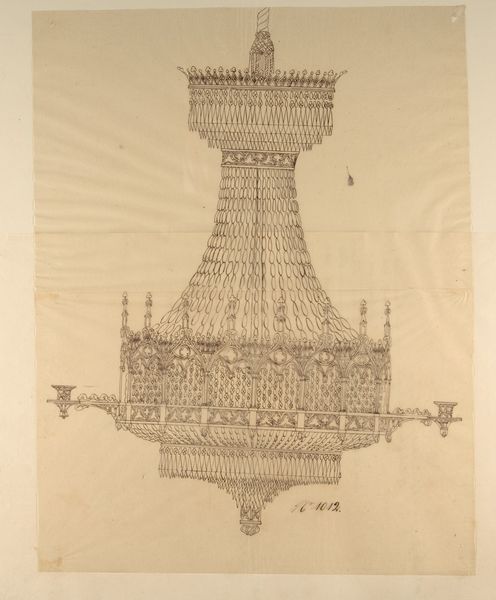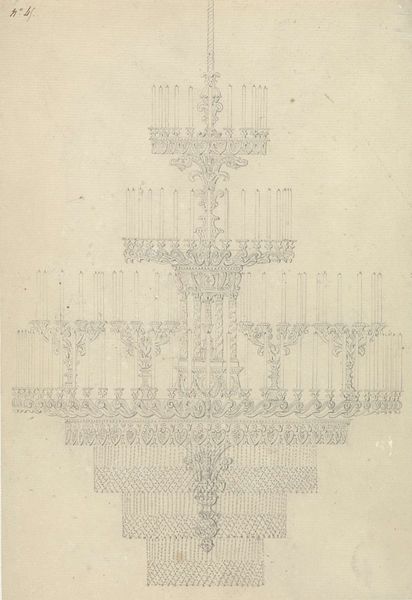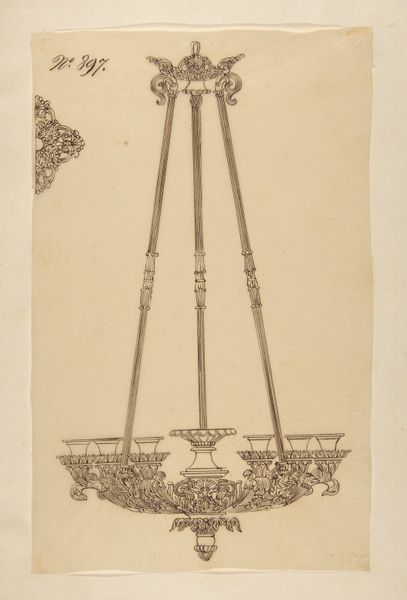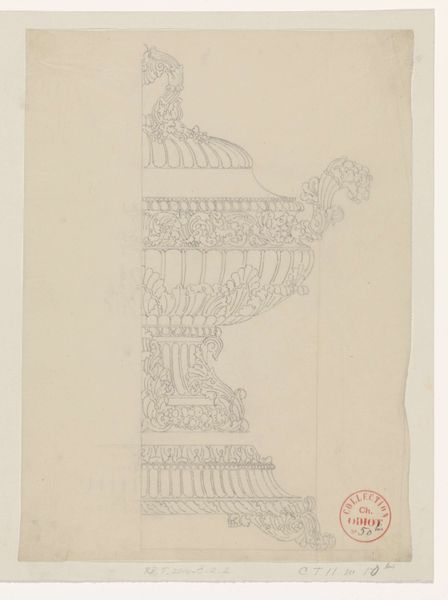
drawing, print, pencil, engraving
#
pencil drawn
#
drawing
#
neoclacissism
# print
#
etching
#
pencil
#
decorative-art
#
engraving
Dimensions: sheet: 16 1/8 x 10 in. (41 x 25.4 cm)
Copyright: Public Domain
Editor: Here we have "Design for a Chandelier," a 19th-century drawing by an anonymous artist, housed at the Metropolitan Museum of Art. The meticulous detail is striking; you can almost hear the delicate clinking of crystals. It's like a ghost of luxury. What do you make of it? Curator: A "ghost of luxury," a powerful description! It resonates because light, embodied in the chandelier, has always been more than mere illumination. Consider, for millennia, the control of light symbolized power. Temples oriented to solar events, torches carried by those in authority... What might the repeated oval shapes suggest to you, in the body of the chandelier? Editor: Hmmm, repeated ovals... perhaps eyes, watching and reflecting back the light and power? Curator: Intriguing! The eye as a symbol has deep roots – protection, all-seeing wisdom. Now consider the context: the 19th century, a period of burgeoning industrial power, yet still clinging to symbols of aristocracy and divine right. Chandeliers like this weren't merely functional; they were performative declarations. Do you see a tension there? Editor: Definitely! It's caught between old-world grandeur and a new, dawning age. Almost like the artist is longing for the past but knowing it's fading away. The precision of the drawing itself feels almost…mechanical. Curator: Precisely! This "mechanical" precision speaks to that very tension. The design aspires to an almost mathematical ideal, fitting within Neoclassical principles that revived ancient aesthetics. It uses culturally charged symbols – light, geometric forms, a sense of order – to create an object meant to command awe. Editor: So, the chandelier becomes a stage for these competing ideas about power and beauty. It makes you wonder about the people who lived under its light, what they valued. Thanks, I hadn’t thought about it that deeply before! Curator: Indeed. These objects aren't silent. They hold memories. By understanding their symbols, we better understand ourselves.
Comments
No comments
Be the first to comment and join the conversation on the ultimate creative platform.
